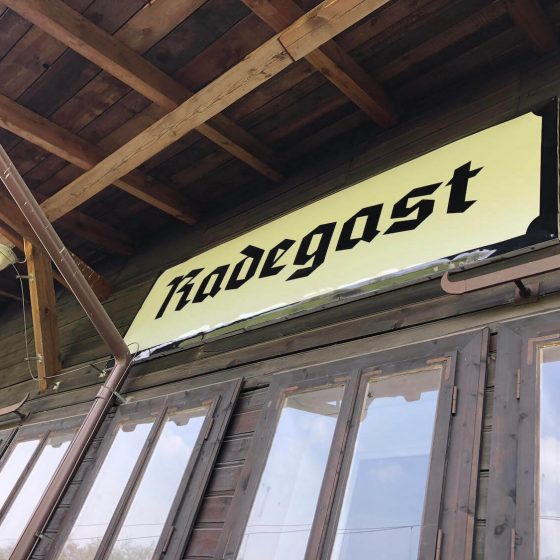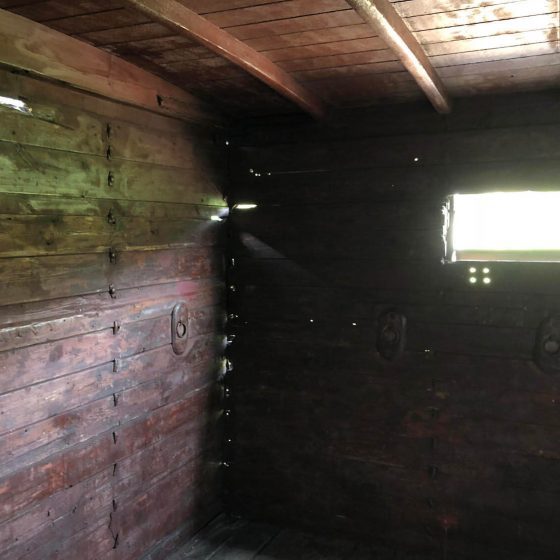Radegast
In October of 1941 first transport of Jews from Western Europe had arrived at the Radegast station at the already overcrowded ghetto in Lodz. The majority of the Polish Jews considered assimilation an apostasy, whereas the German Jews considered their attachment to an orthodox mysticism and isolation from society ignorant. They even felt an animosity against those coming from the East. And here the two groups were forced to meet. Read more below.
ABOUT FILM
ABOUT DIRECTOR
CREDITS
SCREENINGS AND AWARDS
ABOUT FILM
In October of 1941 first transport of Jews from Western Europe had arrived at the Radegast station at the already overcrowded ghetto in Lodz. The majority of the Polish Jews considered assimilation an apostasy, whereas the German Jews considered their attachment to an orthodox mysticism and isolation from society ignorant. They even felt an animosity against those coming from the East. And here the two groups were forced to meet.
Between that date and August 29th of 1944 Germans had sent 250 thousand Jews to death camps in Chelmno and Auschwitz. The Borys Lankosz’s documentary is a story about so-called “inteligencia”: lawyers, doctors, professors, philosophers, and writers. All were forced to relocate to the Lodz’s ghetto from Prague, Vienna, and Frankfurt where two worlds had collided: the aristocracy and intelligencia of the western Jews with the eastern Jews’ working class. For the first time in modern history, two distant communities split not only by two centuries of civilization but also by an emancipation which had transformed the life of the Western Jews faced each other. With a terrifying cold the eyewitnesses to the events describe the terror of the ghetto’s every-day life where what has been left after 250 thousand people are burnt bones and unsent post cards. Using modern and old photographs, reports and authentic speeches of Chaim Rumkowski, the Lodz ghetto Judenrat leader (played by an actor), authors of the film are trying to gain an insight into a tragic reality of that time.
Duration: 50 minutes/English subtitles
ABOUT DIRECTOR
Borys Lankosz
Borys Lankosz is one of the most popular Polish filmmakers of his generation. Alumnus of the famous National Film School in Lodz, he made his debut in 2001 with a harrowing documentary Evolution about neglected patients of a mental institution, awarded on various international documentary festivals, including San Francisco International Film Festival. His documentary Radegast (2008) tells the story of Western European Jews, deported to the ghetto of Lodz via the namesake train station, the Nazi gates of hell. Polish moviegoers known Lankosz primarily for his feature movies – his dark comedy about Stalinism Reverse (2009) (the plot can be summarized as Arsenic and Old Lace meets 1984) was the Polish official entry for the Academy Award. His thriller A Grain of Truth, where the phantoms of medieval antisemitism seem to reappear in a contemporary small Polish town, was a box office hit of 2015.
CREDITS
Screenwriter:
Andrzej Bart
Director:
Borys Lankosz
Photography:
Borys Lankosz
Editor:
Borys Lankosz
Producer:
Andrzej Bart
Beata Bart
Distributor:
LOGTV, LTD
SCREENINGS AND AWARDS
SCREENINGS
• Special Award of the Monumentum Iudaicum Lodzense Foundation, Man In Danger Media Festival, Lodz 2009
• Silver Phoenix at “Jewish Motifs” – International Jewish Film Festival in Warsaw, 2009








